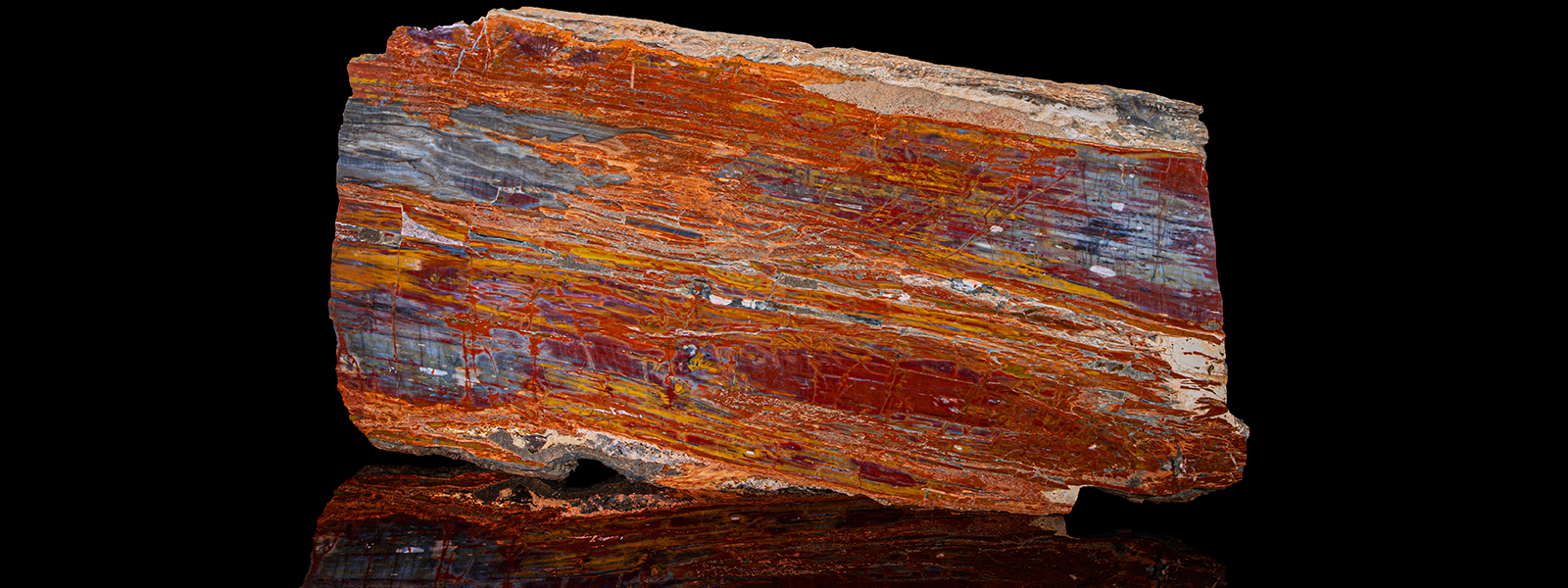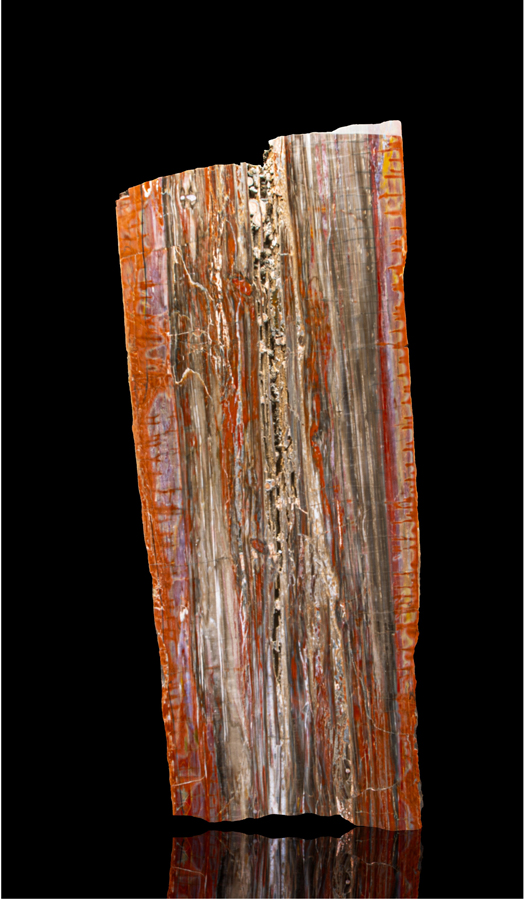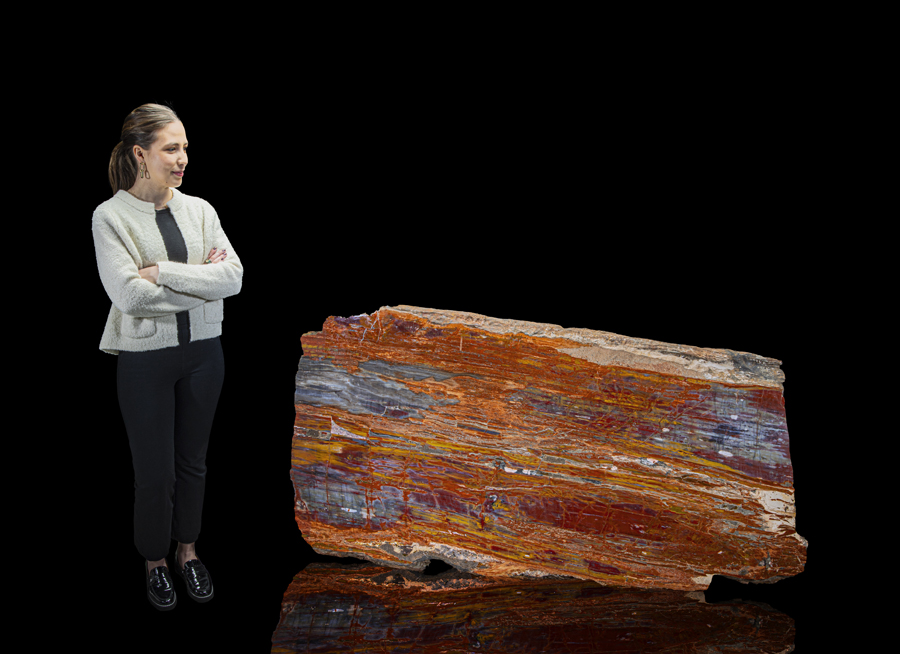NAMED FOR ITS KALEIDOSCOPE OF COLORS, A PRIZED TYPE OF PETRIFIED WOOD FROM ARIZONA IS SCARCE AND GETTING SCARCER
By Craig Kissick
Hard to find, difficult to cut and heavy to transport represent just some of the challenges of working with Arizona’s rare Rainbow petrified wood. This exceptional specimen, one of the finest known, is available in Heritage’s April 24 Nature & Science auction.
During the Triassic Period, an astonishing 200 million years ago, forests of large trees were buried under layers of overburden and fossilized into petrified logs, which ultimately revealed exceptional material inside. The petrified wood from Arizona known as “Rainbow” – so named because of its exceptional array of vibrant colors, including rust orange, purple, mustard yellow and slate blue, among other vivid hues – can be cut and polished into some of the finest collectible and decorative specimens in the fossil world.
The extinct conifer – likely similar to a modern pine tree – was abundant when the dinosaurs were beginning their reign. Through what is known as capillary attraction, the porous organic trees attracted various trace elements and other components from the hydrothermal currents when water flowed through the buried treasures. The organic material was replaced cell by cell and permineralized (agatized) into the botanical fossils, creating colorful examples that maintained many of the visual characteristics of the original logs. The fact that such specimens can be cut and polished into decorative wall hangings or functional items such as tabletops and bookends makes this beautiful and inherently strong material even more appealing and highly collectible.
One private locality that has produced a significant quantity of the permineralized material was the Paulsell Ranch, which became part of the Petrified Forest National Park in 2011, effectively ensuring no more substantial logs of the coveted material would be found. What was left in private hands is the extent of the rainbow-colored petrified wood.
On April 24, however, collectors will have the rare opportunity to acquire examples of this natural art form when Heritage offers two massive slabs of Arizona Rainbow petrified wood during its Nature & Science Signature® Auction. The goliath specimens, both of which stretch more than 5 feet long, are some of the finest known and were manufactured by the Russell-Zuhl Company, the world’s top artisan for petrified wood.
Colors ranging from orange, red and purple to mustard, blue and gray blanket this large offering of Rainbow petrified wood available in Heritage’s April 24 Nature & Science auction.
These botanical remnants from prehistoric times are considered some of the finest fossils anyone can own, and it is easy to see why with these surreal examples. To see and touch such petrified wood brings the past to life, and the inherently rare material is even more finite now that the top-producing locality is part of a national park.
 CRAIG KISSICK is Vice President of Nature & Science at Heritage Auctions. He can be reached at CraigK@HA.com or 214.409.1995.
CRAIG KISSICK is Vice President of Nature & Science at Heritage Auctions. He can be reached at CraigK@HA.com or 214.409.1995.



